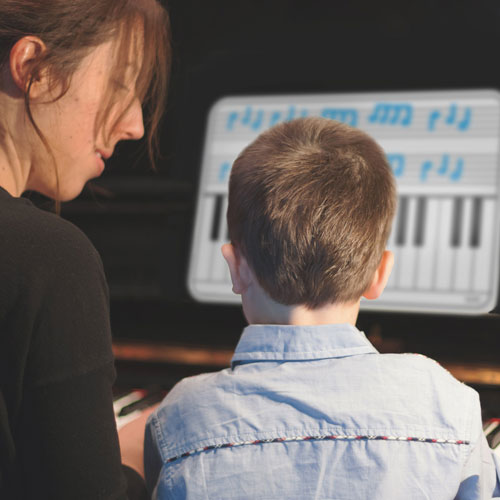
With the current state of the medical system, it’s becoming more important than ever to learn how to improve HCAHPS scores. You’re likely feeling pressure from your boss or your hospital’s quality department to improve your unit’s scores. Making patient satisfaction a priority may involve some culture shifts and patience, but there are tools to help you.
One of those tools you can use to improve HCAHPS scores is a whiteboard. Whiteboards are versatile and can be used in a variety of ways to improve patient care and satisfaction. Physical displays, such as whiteboards, increase success because they act as visual reminders, which are 20% more effective than auditory reminders.
Keep reading to learn five ways you can use whiteboards to improve your unit’s HCAHPS scores.
What is HCAHPS
HCAHPS (Hospital Consumer Assessment of Healthcare Providers and Systems) scores are used to measure patient satisfaction with hospital care. These scores are crucial because they can affect a hospital's reputation and financial performance.
This survey is an important method to measure patients’ experience in a hospital setting. HCAHPS is public and standardized across the United States, asking patients 29 questions after they are discharged.
The categories of survey questions are:
- Communication with nurses and doctors
- Communication about medicines
- Responsiveness of hospital staff
- Discharge information
- Understanding care when leaving hospital
- Cleanliness and quietness of hospital environment
- Overall rating of hospital
- Willingness to recommend the hospital
The results of this survey are public information and anyone can look up the scores for specific medical centers on Hospital Compare. Based on these results, the Centers for Medicare and Medicaid (CMS) adjust how much payment hospitals receive from Medicare, which incentivizes hospitals to provide better care.
Here are five methods you can utilize a whiteboard to increase your unit’s HCAHPS scores:
1. Use Whiteboards to Display Patient Care Plans
Hospitals can use whiteboards to display care plans for patients. This can help patients feel more involved in their care and give them a sense of control. It can also help reduce the chances of miscommunication between the patient and the care team. When patients understand their care plan, they are more likely to feel satisfied with their care and have better outcomes.
In a 2021 study by Carleene Bañez et al., they discovered that 80% of patients and their families looked at whiteboards for information. Patients and families found that information about the care plan was especially valuable.
2. Whiteboards Can Be Used to Explain Procedures and Treatments to Patients
This can help reduce anxiety and stress for patients who may be unsure about what to expect. When patients understand what is happening and why, they are more likely to feel satisfied with their care.
With a magnetic whiteboard, you can display diagrams of procedures, frequently asked questions, and what the patient can expect. This could help mitigate any confusion a patient may have before and during a procedure or treatment.
Educating your patients decreases uncertainty and anxiety, which leads to better customer satisfaction. TigerConnect’s Chief Medical Officer Andrew A. Brooks, MD, recommends a strong focus on communication, specifically with a whiteboard, to boost HCAHPS scores. In an article by Becker’s Healthcare, he says “hospitals can also educate patients via written instructions … on a whiteboard placed within a patient’s eyesight. Educating patients during transitions of care … is critically important.”
3. Use Whiteboards to Introduce Care Team Members
Hospitals can use whiteboards to introduce care team members to patients. This can help patients feel more comfortable and familiar with the people who are taking care of them. It can also help patients feel like they are part of a team, working together towards a common goal.
In 2019, Kramer Wahlberg, Shea Lambirth, and Zechariah Gardner performed a study on improving physician identification and overall patient satisfaction using visual aids and whiteboards. They discovered that 68% of the patients who had the attending name displayed on a whiteboard in their room were able to correctly identify the attending physician. Utilizing a whiteboard can directly affect your “Communication with doctors” scores.
4. Use Whiteboards to Track Progress
Hospitals can use whiteboards to track patient progress and milestones. This can help patients feel motivated and encouraged as they see their progress over time. It can also help care teams stay on track and ensure that patients are receiving the care they need.
According to a 2015 study titled “Does Monitoring Goal Progress Promote Goal Attainment? A Meta-Analysis of the Experimental Evidence” by Benjamin Harkin, PhD, of the University of Sheffield, it is important to monitor progress to ensure that we are acting on our goals. The study also suggested that monitoring progress makes someone more likely to change their behaviors and they are more likely to achieve their goals.
Having a large, visual way to track your patients’ progress will help them attain their health goals, which will ultimately make positive outcomes more likely.
5. Use Whiteboards to Solicit Feedback
Hospitals can use whiteboards to solicit feedback from patients. This can help hospitals identify areas for improvement and make changes to improve patient satisfaction. When patients feel heard and valued, they are more likely to feel satisfied with their care.
Instead of waiting for patients to fill out their HCAHPS survey after they are discharged, you can ask for instant feedback with a board. You can inform patients how they can submit feedback and how you will use the feedback. If you can make suggested changes as soon as possible, your unit may score better on patient satisfaction questions.
Key Takeaways
Whiteboards can be a powerful tool for improving HCAHPS scores. By using whiteboards to display care plans, explain procedures, introduce care team members, track progress, and solicit feedback, hospitals can improve patient satisfaction and outcomes. By making small changes like these, hospitals can make a big difference in the lives of their patients.
You can follow us on all social media @MyWhiteboards.
Why Choose Us?
We are a small business whose products are made in the U.S.A. We specialize in dry erase boards, dry erase wall coverings, portable dry erase units, high-quality custom printed whiteboards, fast shipping, and five-star customer service. Over the last three decades, we’ve worked hard to deliver industrial-quality whiteboard solutions that won’t hurt your budget.
Sources:
- Agency for Healthcare Research and Quality: CAHPS Adult Hospital Survey
- American Psychological Association: Frequently Monitoring Progress Toward Goals Increases Chance of Success
- Becker’s Healthcare: Going from Good to Great Care — 5 Ways to Boost HCAHPS Scores
- Centers for Medicare & Medicaid Services: HCAHPS: Patients’ Perspectives of Care Survey
- National Library of Medicine: Applying local context to design and implement patient room whiteboards
- National Library of Medicine: Improving patients’ ability to identify their physicians through the use of physician facecards and whiteboards
- Proceedings of the National Academy of Sciences: Auditory recognition memory is inferior to visual recognition memory





